
Back
Aglaia odorata Lour.
| Family Name: | Meliaceae |
| Common Name: | Chinese Perfume Plant, Telur Belangkas, Mock Lime, Chulan, Bebak, Chinese Rice Flower, Pokok Telur Belangkas, 米仔兰 |
Aglaia odorata, also known as Chinese Perfume Plant is a large bushy shrub that has small yellow fragrant flowers that attracts butterflies for its nectar. This easy to grow plant is ideal in parks and gardens as well as in pots.
Name
Classifications and Characteristics
| Plant Division | Angiosperms (Flowering Seed Plants) (Dicotyledon) |
|---|---|
| Plant Growth Form | Shrub |
| Lifespan (in Singapore) | Perennial |
| Mode of Nutrition | Autotrophic |
| Plant Shape | Shrubby |
Biogeography
| Native Distribution | Cambodia, Laos, Thailand, Vietnam |
|---|---|
| Native Habitat | Terrestrial (Mountain, Secondary Rainforest) |
| Preferred Climate Zone | Tropical |
| Local Conservation Status | Non-native (Horticultural / Cultivated Only) |
Description and Ethnobotany
| Growth Form | Large shrub or small tree with highly branched crown, able to grow up to about 20 - 30 m tall. |
|---|---|
| Foliage | Compound leaves measuring about 5 - 12 cm long are composed of 3-7 typically obovate leaflets (egg-shaped with the wider end at the tip). Leaflet are paired with the terminal leaflet larger than the others and each leaflet measuring about 6 cm long. |
| Flowers | Yellow, fragrant flowers (2 mm wide) are arranged in an inflorescence known as a thyrse. The inflorescence is located in the leaf axils (the space between the upper surface of the leaf and the stem). Male and female flowers occur on separate individuals. |
| Fruit | Indehiscent fruit is egg-shaped to approximately round (1-1.2 cm wide). The seeds are surrounded by fleshy tissue known as an aril. |
| Cultivation | Provide plant with full sun and moist, well-drained soil. Prune occasionally to encourage more branching. |
| Etymology | Genus Aglaia is derived from the Greek word Αγλαιη which means splendour or beauty and also refers to one of the three Graces in Greek mythology. Species odorata refers to the fragrance produced by the flowers of the plant. |
| Ethnobotanical Uses | Food (Herb or Spice): The dried flowers and buds are added to tea for their pleasant fragrance. Medicinal: In Philippines, Indonesia and China, the plant is used in folk medicine. The leaves are used to treat excessive menstruation. The flowers are used to treat cough, vertigo and ease childbirth. |
Landscaping Features
| Landscaping | The plant is ideally grown in parks, small gardens for it's ornamental and fragrant flowers. It can also be grown as bonsai or container planting. |
|---|---|
| Desirable Plant Features | Fragrant (Flowers) (Dawn / Dusk), Ornamental Flowers |
| Landscape Uses | General, Parks & Gardens, Small Gardens, Hedge / Screening, Container Planting, Suitable for Bonsai |
Fauna, Pollination and Dispersal
| Fauna Pollination Dispersal Associated Fauna | Butterfly-Attracting |
|---|---|
| Pollination Method(s) | Biotic (Fauna) |
Plant Care and Propagation
| Light Preference | Full Sun, Semi-Shade |
|---|---|
| Water Preference | Moderate Water |
| Plant Growth Rate | Moderate |
| Rootzone Tolerance | Moist Soils, Well-Drained Soils |
| Propagation Method | Seed, Stem Cutting (Semi-Hardwood) |
Foliar
| Foliage Retention | Evergreen |
|---|---|
| Mature Foliage Colour(s) | Green |
| Mature Foliage Texture(s) | Smooth, Glossy / Shiny |
| Prominent Young Flush Colour(s) | Green - Light Green |
| Young Flush Texture(s) | Velvety / Furry / Tomentose |
| Foliar Type | Compound (Odd-Pinnate) |
| Foliar Arrangement Along Stem | Alternate |
| Foliar Attachment to Stem | Petiolate |
| Foliar Shape(s) | Non-Palm Foliage (Ovate) |
| Foliar Venation | Pinnate / Net |
| Foliar Margin | Pinnately Lobed / Pinnatifid |
| Foliar Apex - Tip | Obtuse |
| Foliar Base | Acute |
| Leaf Area Index (LAI) for Green Plot Ratio | 4.5 (Shrub & Groundcover - Dicot) |
Floral (Angiosperm)
| Flower & Plant Sexuality | Unisexual Flowers , Dioecious |
| Flower Colour(s) | Yellow / Golden |
|---|
| Flower Texture(s) | Smooth |
| Flower Grouping | Cluster / Inflorescence |
| Flower Location | Axillary |
| Inflorescence Type | Thyrse |
| Flowering Period | Free-Flowering |
Fruit, Seed and Spore
| Fruit Classification | Simple Fruit |
|---|---|
| Fruit Type | Indehiscent Dry Fruit |
Image Repository
Others
| Master ID | 313 |
|---|---|
| Species ID | 1609 |
| Flora Disclaimer | The information in this website has been compiled from reliable sources, such as reference works on medicinal plants. It is not a substitute for medical advice or treatment and NParks does not purport to provide any medical advice. Readers should always consult his/her physician before using or consuming a plant for medicinal purposes. |

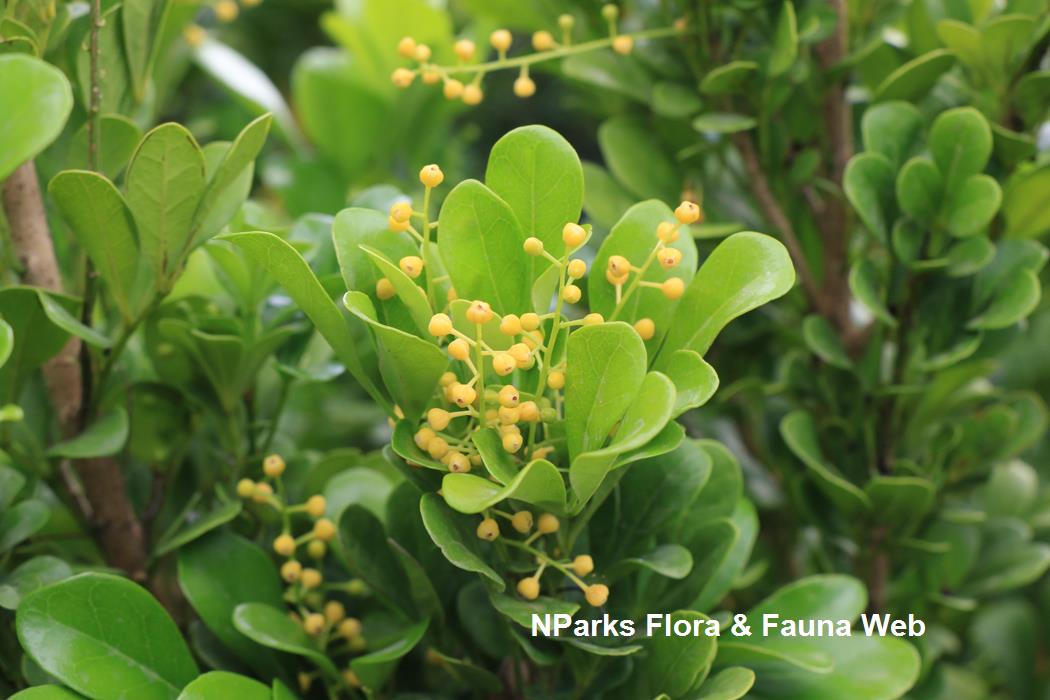

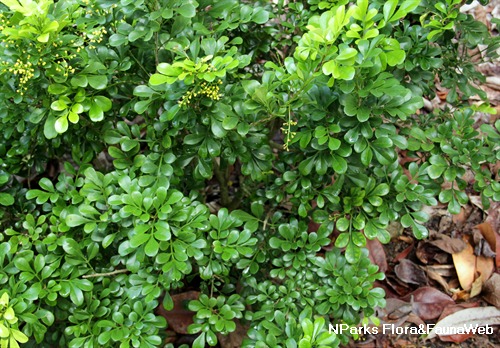
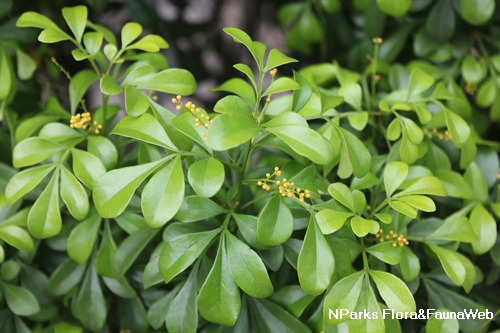
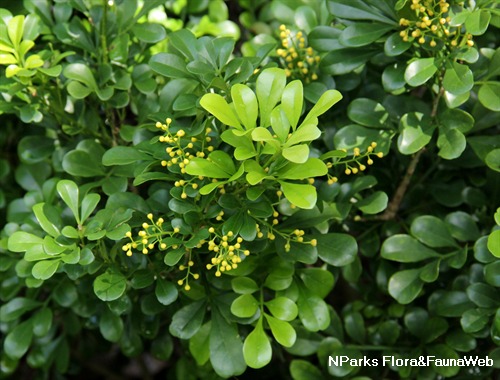
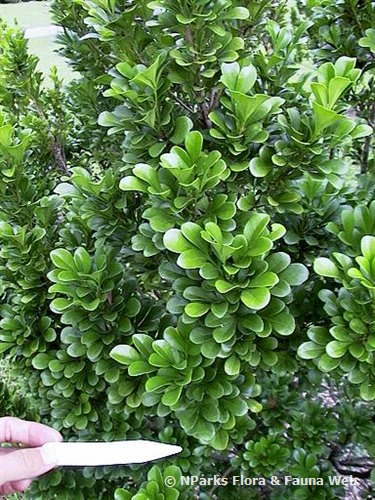
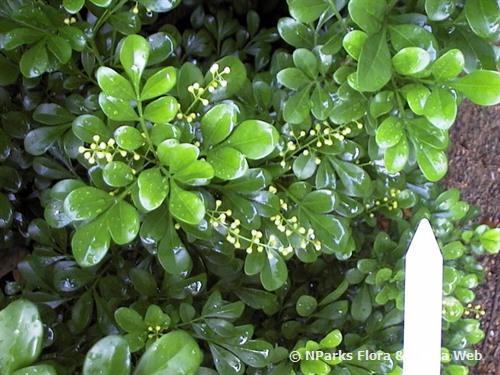
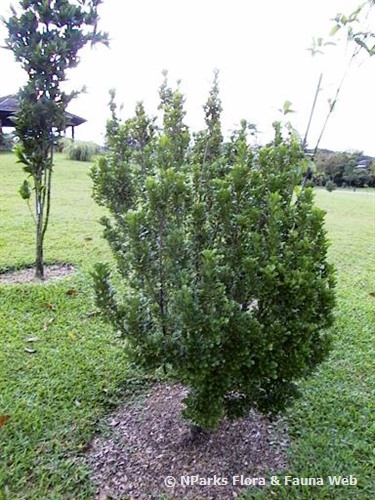
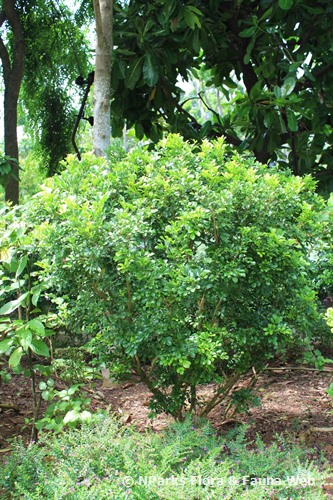
.jpg)


